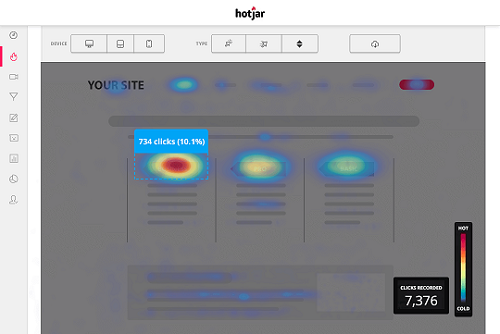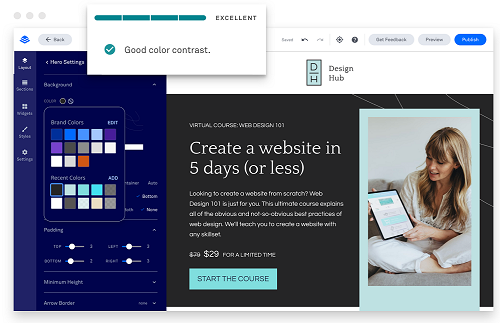Twitter’s Small Business Guide Simplified
 |
| shakesocial.co.uk |
If you’re a small business owner who doesn’t get Twitter, don’t worry – you’re not alone. If you consider yourself a Twitter novice, you’re in luck! Twitter’s web site recently released a swell Twitter for Small Business Guide designed to help folks like you not only learn about the benefits of leveraging their service, but also how to use it at a more functional level. The downside of that is that not all of us have the time to thumb through a ‘how-to’ manual about why and how to use a social media platform that may or may not help us make more money. Not to worry, though! We’ve already done it for you!
This is a simple break down of what Twitter is, why it could be good for you as well as some helpful pointers about how incorporate it into your marketing strategy. There’s a lot of depth to all of these points, so if there’s anything that you require a deeper understanding of, feel free to check out the full guide here.
Let’s not waste any more time!
What is Twitter?
Twitter’s web site puts it pretty succinctly: Twitter is an information network that brings people closer to what’s important to them.
That’s pretty simple, isn’t it?
With over 100 million active users, Twitter is one of the largest networks in the world. Its 250 million tweets per day have turned it into an interest-driven media machine that’s introduced new channels for communication – not just between people, but relevant businesses as well.
How can Twitter help your business?
Small business internet marketing on the whole has become more interest-based than ever before. In a world filled with tons of advertising and push-marketing clutter, platforms like Twitter are allowing people to cut through the noise and get to exactly what it is they’re looking for. It’s made it easier than ever before to connect – and connect frequently- with people who are interested in buying what you’re selling. That means a whole new world of opportunity if you’re brave enough to make the jump.
How does it work?
Users search for, link to and share information using Twitter as an incubator. Your ability to leverage Twitter depends largely on how well you’re able to interact with the people that are of interest to you and those who are interested in you. This perpetual, never ending dialogue with others can help you do a lot of things about people in and around your industry, using your observations to help sculpt a marketing plan based on how your users talk, interact and behave with your brand and brands similar to yours.
Twitter is 100% conversation-driven, meaning that it will take some participation (and time) on your part to make it work. Interacting with your followers and those who you are following yourself isn’t really a choice – it’s a necessity if you’re looking to grow your network and truly make it work. Remember- Twitter isn’t about creating a website – it’s about creating a conversation!
What’s the basic lingo?
The great thing about Twitter is its simplicity. Here are some basic Twitter terms that you’ll have to be familiar with before you start:
Tweets – In a nutshell, a tweet is what you have to say. It has to be under 140 characters in length. Whenever you share out information, you’re tweeting.
Hash tag (#) – Hash tags are the lifeblood of Twitter. They’re essentially the conversations themselves. For example – if you’re a San Diego Padres fan and want to contribute to a discussion on the team, searching the hash tag #padres will take you to thousands of tweets and conversations about the team. Diving right in and tweeting to people or just contributing can result in more interactions. The more interactions mean more conversation. The more conversations you have, the more likely people are to follow you. That brings us to…
Follow – Just like Facebook, Twitter allows you to keep tabs on the people and entities that interest you. If you like what someone has to say, you can follow them and their tweets will show up in your feed. You’ll be able to access the content they provide, read the articles they suggest and interact with them at will.
Followers – These are the people who are following you and want to read what you have to say. Anytime you tweet, they’ll be able to see what you shared in their timeline. This is your audience, so make sure you’re paying attention to what they’re talking about as well! Some folks like to follow the people who follow them- not because of some unspoken courtesy (although that does happen), but rather because there’s a lot they can learn from their behavior.
Direct Message (DM) – Exactly what it says it is. When the conversation becomes too involved or in some cases – too private – for public consumption, Direct Messages allow you to interact with folks on a deeper and more private level.
Retweet (RT) – Retweet allows you to share someone’s comments with the push of a button. Retweeting is especially handy when you’re looking to share information such as a blog post or article. Instead of going through the pain of making your own tweet, you can merely hit the ‘retweet’ command and that person’s tweet will show up in your timeline for your followers to enjoy.
Mention (@) – When you want to bring something to someone’s attention, you can use the mention function. Your tweet will show up in your timeline and be visible to the person with whom you are interacting with. Mentions are usually used to directly start or jump into a conversation.
What are some basic best practices?
Like any information network, Twitter has some best practices that you should follow. The following is a brief summation of the points raised in the Twitter For Small Businesses Guide. For a more comprehensive overview, you can read the guide in its entirety, here.
Show Personality – The biggest part of your brand is you. Don’t be afraid to let your personality shine through. Too many people make the mistake of communicating in a generic tone. Remember, you’re having a conversation, not lecturing folks!
Follow & Learn – People who listen and learn on Twitter are those who are usually the most successful. Follow businesses that are similar to yours and see what they’re doing. Observe what’s working and what isn’t. Over time, your goals will be developed largely in part by the behaviors of your audience.
Give them something more – Twitter can be used to convey information about your company that might not be able to be found elsewhere. Maybe it’s a video showing you making a product. Perhaps it’s a promotion or special offer. It could even be an article teaching someone how to do something. Adding value to your tweets takes them from being just something that’s fun and informative, but a legitimate resource for information to your customers. That’s what will keep them coming back.
Be responsive – When people have something to say to you, respond. Like I said before, Twitter is all about the conversation. Especially if the tweet is something that might be more critical in nature, being able to address it up front and publicly says a lot about how you handle issues. Always be prepared to engage others. Your responsiveness is essential to strong branding!
Tweet daily – The best part about Twitter is that it doesn’t take a lot of effort to stay active. 420 key strokes a day can give you a tweet in the morning, afternoon and evening. Most marketing consultants are going to tell you to tweet at least one to two times daily. It’s up to you how much you decide to dedicate to Twitter daily, but being there every day – especially in the early going – is important! Stay active and stay relevant!
Twitter’s Small Business Guide Simplified
 Reviewed by Anonymous
on
Friday, July 27, 2012
Rating:
Reviewed by Anonymous
on
Friday, July 27, 2012
Rating:
 Reviewed by Anonymous
on
Friday, July 27, 2012
Rating:
Reviewed by Anonymous
on
Friday, July 27, 2012
Rating:














 Entrepreneur, international speaker on Social Media Marketing. First one in the UK to write and speak in conferences about Twitter as a marketing tool. Consultant to Corporate Companies, Government Organizations, Marketing Managers and Business Owners.
Entrepreneur, international speaker on Social Media Marketing. First one in the UK to write and speak in conferences about Twitter as a marketing tool. Consultant to Corporate Companies, Government Organizations, Marketing Managers and Business Owners. Aspiring novelist with a passion for fantasy and crime thrillers. He hopes to one day drop that 'aspiring' prefix. He started as a writer and soon after he was made Executive Editor and Manager of the team at Social Songbird. A position he held for 5 years.
Aspiring novelist with a passion for fantasy and crime thrillers. He hopes to one day drop that 'aspiring' prefix. He started as a writer and soon after he was made Executive Editor and Manager of the team at Social Songbird. A position he held for 5 years. Musician, audio technician, professional tutor and a Cambridge university English student. Interested in writing, politics and obsessed with reading.
Musician, audio technician, professional tutor and a Cambridge university English student. Interested in writing, politics and obsessed with reading. Recently graduated with a BA in English Literature from the University of Exeter, and he is about to study an MA in Journalism at the University of Sheffield. He is an aspiring journalist and novelist; in his free time he enjoys playing chess, listening to music and taking long walks through nature.
Recently graduated with a BA in English Literature from the University of Exeter, and he is about to study an MA in Journalism at the University of Sheffield. He is an aspiring journalist and novelist; in his free time he enjoys playing chess, listening to music and taking long walks through nature. Lucy is an undergraduate BSc Politics and International Relations student at the London School of Economics and Political Science.
Lucy is an undergraduate BSc Politics and International Relations student at the London School of Economics and Political Science. Anna Coopey is a 4th year UG student in Classics at the University of St Andrews in Scotland. She is a keen writer and researcher on a number of topics, varying from Modern Greek literature to revolutionary theory.
Anna Coopey is a 4th year UG student in Classics at the University of St Andrews in Scotland. She is a keen writer and researcher on a number of topics, varying from Modern Greek literature to revolutionary theory.
